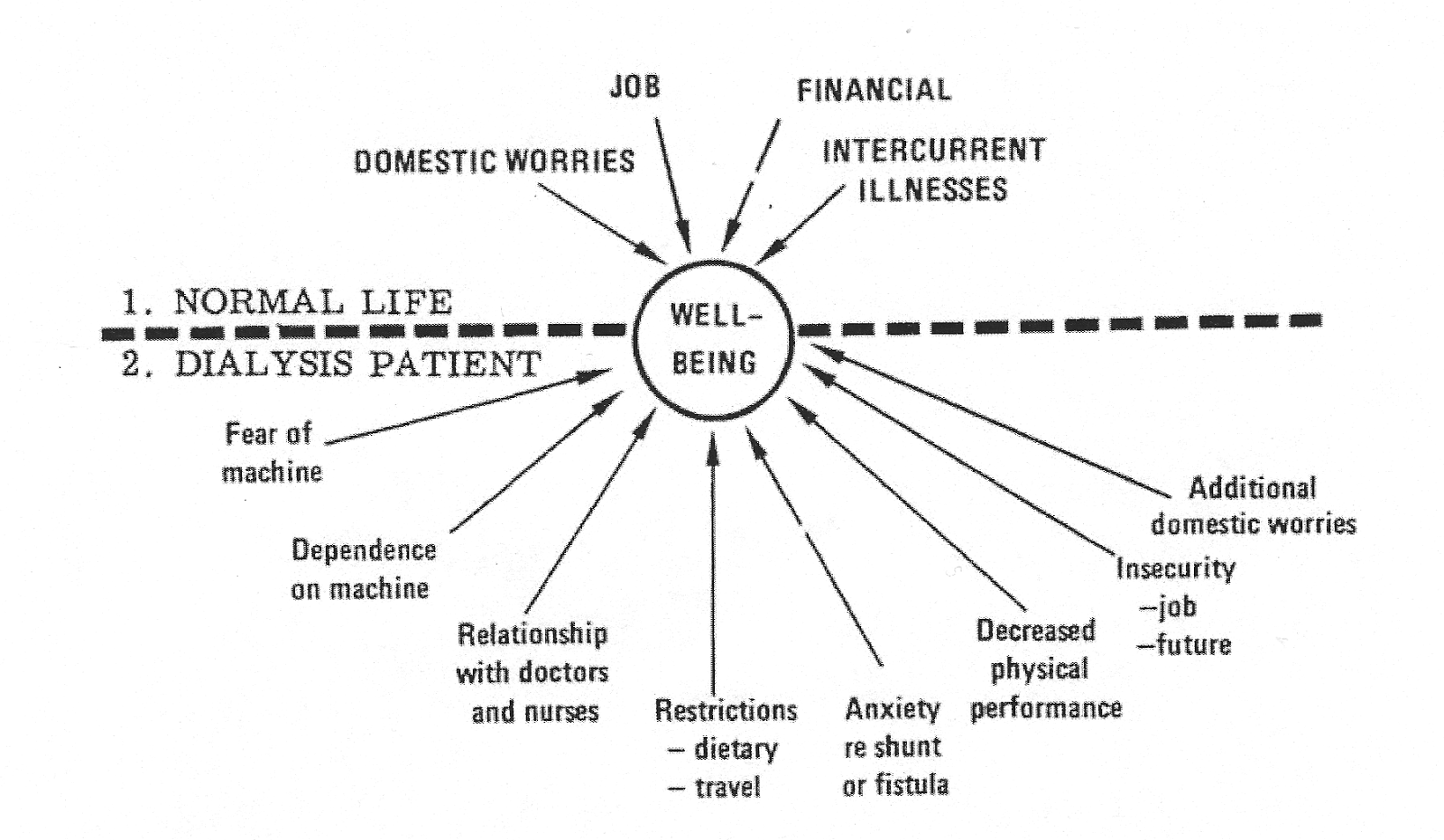The home dialysis expansion of the 1960s and 70s
Hepatitis B outbreaks between 1965 and 1971, sometimes fatal to staff and patients, increased the incentive to keep patients out of renal centres. Home haemodialysis became the standard treatment in the UK. Peritoneal dialysis did not become a serious alternative until the 1980s. Transplantation, as Eady summarised in 1973, made you better if you lived, but had worse outcomes than maintenance dialysis in the late 1960s. Reported 5-year survival was 44-65% for cadaver/live donor versus 75% for haemodialysis.
Shaldon (1968), describing experience from the Royal Free Hospital then the independent National Kidney Centre in London, estimated that independent dialysis in hospital reduced costs by 30%, home dialysis by 50%, so twice as many patients could be treated. However his paper makes the Classic grade for the way it describes the improvement in the quality of care and confidence achieved by working in partnership with patients. He describes technical, emotional and training requirements, and many recommendations sound fresh today. Interestingly solo treatment at home was not ruled out even then. He found that patients of above-average intelligence could be more difficult to train.
Stinson (1972) described reducing Seattle’s training programme from 6 weeks (3 days per week, 20 contact days) to just 3 (up to 15 contact days). 80% of patients achieved this, though it isn’t clear whether this was sustained or successfully repeated elsewhere. Their programme was revolutionary in that it used the very novel technique of videotape to deliver much of the material. Simulated mishaps were also monitored over TV links, and the video played back. Training began two weeks after commencing dialysis.
Robin Eady (1971) reported on 9 years of haemodialysis in three countries, in hospital then at home and with different equipment, access, and dialysis durations. He started dialysis after 10 months of conservative therapy including a 20-30 g/d protein diet, probably making his urea and creatinine underestimate severity. Starting urea was 43 mol/l, (120 mg/dl); creatinine 1830 micromol/l (20.7 mg/dl). His creatinine clearance was 2ml/min. Not surprisingly then dialysis made him feel better, but his neuropathy took years to disappear completely. His survival must surely have been helped by marrying a dialysis sister. In 1973 he reached his 10th year of dialysis, doing 30h of overnight dialysis each week.
 |
| Factors affecting well-being on dialysis (Eady 1971) |
His paper also rather terrifyingly enumerates complications including ‘hard water syndrome’ (Drukker 1968), Cl. welchii septicaemia, brainstem ischaemia following retrograde infusion of saline into the radial artery the start of dialysis, poisoning by formalin from the dialyser, and pyrogenic reactions. These problems ceased when he took over care for his own dialysis with his wife at home. Descriptions of technical and medical aspects are accompanied by a section on well-being (see Figure).
Dialysis patients of the 21st century are on average older and have more comorbidity. In a study of over-65s on home HD, Cornelis et al (2014) report good outcomes, but low uptake rates and a median training time of 75 days. Is it time to re-evaluate expectations?
Further information
Shaldon S 1968. Independence in maintenance haemodialysis. Lancet 291:520-3
Eady RAJ 1971. A patient’s experience of over one thousand haemodialyses. Proc EDTA 8:50-58
Stinson GW et al 1972. Home hemodialysis training in 3 weeks. Trans Am Soc Artif Int Organs 18:66-9
Eady RAJ 1973. Why I have not had a kidney transplant after nine and one-half years as a hemodialysis patient. Transplant Proc 5:1115-7
Cornelis T et al 2014. An international feasibility study of home haemodialysis in older patients. Nephrol Dial Transplant 29:2327-33

